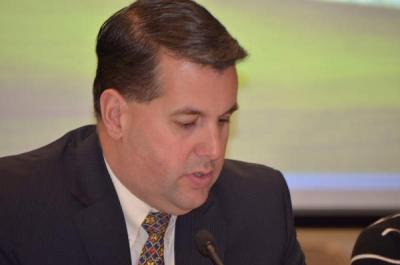Wareham High admins working to keep accreditation
Administrators at Wareham High School are working to ensure the school stays accredited, and by doing so, they’re making sure their students have a fair shot at getting into college.
At a meeting of the School Committee Wednesday evening, Principal Scott Palladino gave an update regarding the school’s progress on several of the New England Association of Schools and Colleges’ suggestions. In 2012, Wareham High School received accreditation from NEASC, but along with it came a ‘warning status’ tag, meaning the school could be placed on probation and eventually lose its accreditation if administrators did not complete a number of prescribed recommendations.
Accreditation is a process completed by an independent agency which ensures that schools are providing a high-quality education and therefore that students' diplomas will be recognized by colleges and potential employers.
Palladino said the school has made improvements in several areas identified by NEASC when they visited the school in 2011. According to Palladino, improvements include:
- Efforts to fix the school’s porous roof, which funding was approved for at the recent spring Town Meeting.
- An increased opportunity for teachers to collaborate and prepare.
- The formation of vertical curriculum committees to align with state standards.
- An alignment of learning evaluations for students.
- An installation of a summer learning program (which has been seen across the district).
- The use of grading rubrics.
- The use of early release days for professional development workshops.
- Improvements to wireless access.
- Improvements in technology.
- An ability to effectively implement PARCC testing.
While Palladino said they’d been able to address around 90 percent of NEASC’s suggestions, he did note areas that still need improvement, such as:
- A need for renovations in the school’s portable units.
- A need to replace worn stair treads, the school’s HVAC unit, and chairs and desks, among others.
- A need to “go digital” with student portfolios.
- A need to engage disconnected families.
NEASC-accredited schools undergo a mandatory review process every 10 years, and Palladino said this report was part of a mandatory two-year progress report required by NEASC. He also said it’s not uncommon for a NEASC-accredited school to receive a warning status.
“We’re pretty excited to be able to (address most of the issues) in two years,” said Palladino, noting they’d be taking the roof portion off of NEASC’s list upon its completion, which is expected to take place in the fall. “It’s not unusual for a high school to have full (accreditation) status with a warning status. Every school has some improvements that they need to work on.
Palladino said the 2012 accreditation would last for another seven-and-a-half years.
“I really am excited about the fact that you and the students have accomplished what you need to at the high school,” said Melvin Lazarus of the committee.















